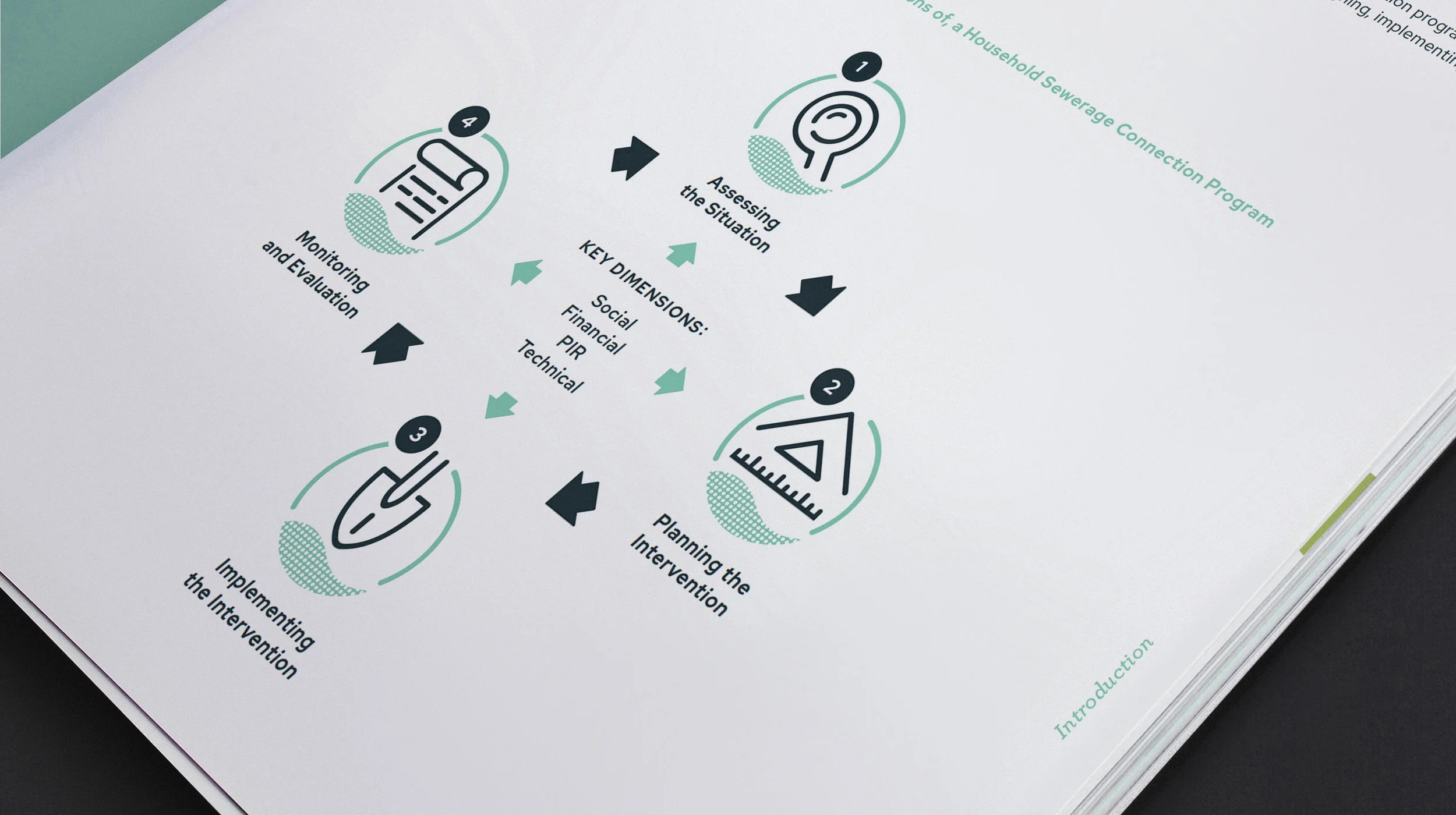A Guide to Increase Household Sewerage Connections
Cities and towns in low- and middle-income countries tend to grow rapidly, and often struggle to maximize the number of households provided with safely managed sanitation services. The results are negative public health and environmental effects in the most vulnerable communities around the world. Providing piped sanitation helps governments deliver on their commitment to achieve access to adequate and equitable hygiene for its citizens—something many of us take for granted. Funded by the World Bank’s Water Global Practice, Connecting the Unconnected is an information and instruction guide created for planners, engineers, decision makers, and other stakeholders looking to increase household sewerage connections in lesser developed nations.
While all dimensions to establishing safe and reliable connections are critical, the primary takeaway is the importance of community engagement, and addressing the entire sanitation service chain. The design on the front cover sought to express this sentiment by capturing, in a fun, illustrated collage, the many considerations and ingredients that go into developing a successful sewerage program. To aid readers in navigating this dense guide, sections are distinguished by colored tabs located at the outer edges of each spread, and a unique set of icons (shown above) is used to identify the four stages involved in a typical project cycle. The redesigning of several key infographics highlights many of the challenges plaguing these communities, and the likely solutions. The palette was chosen carefully, and is mostly comprised of mid-tones and dark pastels which not only complement the photography, but provide the contrast needed to effectively highlight headers, subheads, and other important visual callouts.




















